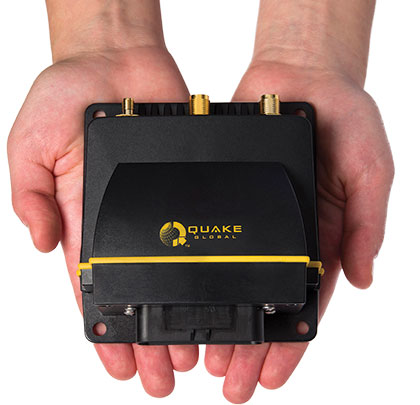Managing a group of assets, whether remote or local, involves many factors that affect Return on Investment (ROI). For all assets, theft is a major concern, while the cost of fuel can be the determining factor for profitability with mobile assets.
THEFT ISSUES
Heavy equipment has an unfortunately high level of theft. The theft can be as large as a piece of heavy machinery, or as simple as a tank of fuel. This is due primarily to:
- Poor security for the equipment and the worksite
- Relatively high value of equipment or materials
- Low risk of detection and arrest
According to Jeff Schaengold’s article, “Fuel theft in the USA reaches $8 Billion in 2008” on RFID Switchboard, “Fuel theft cost the United States trucking industry $8 billion in 2008, with $2.1 billion of that attributed to just employee theft.”
For heavy equipment, newer equipment is the primary target of thieves because it is just as easy to steal as older, less valuable equipment. Productivity is valued more than security: since most heavy equipment needs multiple operators, owners usually do not utilize antitheft technology. Heavy equipment manufacturers installed as many security features on 1980 models as they did on 2012 models, according to Schaengold.
According to the National Equipment Register’s “2012 Equipment Theft Report,” the recovery rate of stolen heavy equipment is just 20 percent. This is mainly due to:
- Delays in the discovery and reporting of theft (a theft on Friday evening might not be discovered until Monday morning)
- Inaccurate or nonexistent owner records
- Limited law enforcement resources dedicated to equipment investigations (according to Schaengold)
Estimates from the 2012 Theft Report of the National Equipment Register place the value of stolen heavy equipment and vehicles at nearly $300 million. That amount does not include the additional impact on ROI, such as wasted personnel time, work stoppage, the cost of replacement rentals, and project-delay penalties.
FUEL EXPENSES
One of the biggest challenges faced by a fleet manager is fuel expense. One cause of this problem can be neglected mechanical maintenance of the asset, which can lead to an unnecessary increase in fuel consumption. Some avoidable expenses are:
- Proper tire inflation: Proper tire inflation results in a longer life span and increased fuel economy. According to the U.S. Department of Energy’s “Strategies to Conserve Fuel, Alternative Fuels Data Center,” every decrease in pressure by 1 lb. per sq. in. for four tires can decrease fuel economy by 0.3 percent.
- Recommended motor oil: Fuel economy can be improved 1-2 percent by ensuring that the manufacturer’s recommended grade of motor oil is used, according to the DOE.
- Engine tune-ups: Tune-ups can increase fuel economy by up to 4 percent. According to the DOE, if a more serious problem such as a faulty oxygen sensor is fixed, fuel economy can improve by 40 percent.
Another source of excessive fuel usage is often inefficient or aggressive driving behavior. Incorrect driver behavior is a major contributor to a significant increase in fuel costs. Factors such as speed, acceleration, idling, and number of stops affect fuel economy. The behavior of the driver is instrumental to reducing the amount spent on fuel. Research conducted in the “Final Report on the Fuel Saving Effectiveness of Various Driver Feedback Approaches,” by the National Renewable Energy Laboratory shows that improving driving behaviors could reduce vehicle fuel use by 10 percent. When is it better to stop/restart the engine to avoid idling? The delivery company UPS reports in “Saving Fuel: The Benefits of No Idling,” that idling for 30 seconds uses more fuel than restarting the engine.
SYNCHRONIZED ASSET INTELLIGENCE
Faced with these multiple challenges, most fleet managers are aware that they need an integrated approach to manage all components of their fleet. With the goal of a healthy ROI, successful fleet management calls for a telematics system.
Implementing telematics involves the installation of smart communicators that can track fuel usage, maintenance requirements, and overall asset performance in order to help fleet managers track key metrics. These devices often have GPS and satellite capability and can monitor miles driven, idle time, and the paths taken, which can assist in tracking engine use and various factors of driver behavior. These features can help fleet managers identify opportunities for improvement and implement the appropriate training.
Since it can be difficult or cost-prohibitive to physically secure an entire worksite of construction equipment, each asset can have sensors installed that would detect and report unscheduled use or movement. To reduce fuel theft, an abnormal fuel level change or an opened/closed fuel door can be monitored.
Some telematics devices can also control the asset remotely, making it possible to disable the ignition of a stolen vehicle or piece of equipment, rendering it immobile and greatly increasing the chances that an immediate alert to law enforcement will result in recovery and arrest.
With telematics, asset maintenance becomes part of the monitoring process. The condition and status of the asset’s engine and parts can be monitored through alert messages and analytics reporting, triggering any necessary maintenance and repairs as soon as a need is apparent. This will result in reduced downtime and increased safety of both the asset and the driver.
Synchronized Asset Intelligence is enabled with a properly designed telematics solution. Next generation vehicle communicators will enable device to vehicle connectivity, as well as vehicle to vehicle connectivity, opening the door for many more applications and use cases to help improve your ROI. ■
About The Author: Kevin Harris is the director of product management at Quake Global and Candice Hirschmann is the senior technical writer at Quake Global. To learn more, visit www.quakeglobal.com.
_________________________________________________________________________
Modern Contractor Solutions, July 2015
Did you enjoy this article?
Subscribe to the FREE Digital Edition of Modern Contractor Solutions magazine.



